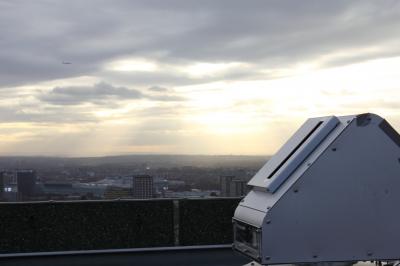Researchers from the University of Leicester have developed announced the development of a new technology for monitoring the effect of high traffic on London’s pollution levels during the 2012 Olympics.
 This shows a CityScan instrument in use. Credit: University of Leicester
This shows a CityScan instrument in use. Credit: University of Leicester
The university made the announcement during the annual Universities Week campaign, which began on April 30, 2012. It aims at increasing awareness of the role of universities across UK. The 2012 campaign will focus on essential contributions made by the universities to the society, the sports industry and the Olympic movement.
Expected to attract over 11 million visitors and an additional 3 million cars during the 2012 Olympic and Paralympic Games, the researchers will utilize CityScan technology to scan the city and check the air quality to investigate the effect of the extra traffic. The CityScan technology has been designed to provide reading of high accuracy from all locations of the city, which provides an advantage over other pollution scanning technology that can also gather readings of air quality from specific hotspots. The study will also enable the researchers to identify if the times and days when the air pollution level is highest.
For the monitoring project during the Olympics, researchers will set sensors on a 14 storey building located in Chelsea and at a 30 storey building located in North Kensington. A total of three sensors will be set up to provide accurate readings of nitrogen dioxide produced from traffic emissions. The gas can adversely affect lung function and increase the susceptibility to respiratory illnesses.
The team leader of the Earth Observation Science Group at the University of Leicester, Dr Roland Leigh stated that the technology will enable them to map the pollution levels in 3D and help determine the spread of the pollution.